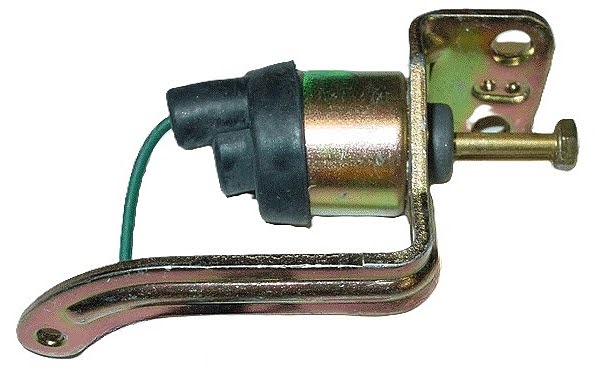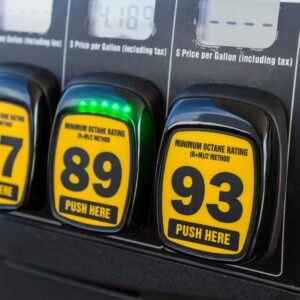Have you ever turned off your car or truck, only for its engine to keep going for several seconds before finally shutting down? It’s called dieseling, and it usually only happens to vehicles with carburetors. Fortunately, you can fix a dieseling concern by identifying what causes it in the first place and taking steps to fix it.
Reasons Why the Engine Diesels When Shut Off
Technically, for the engine to run, it needs fuel and a way of igniting the fuel. But turning off your vehicle cuts power to the spark plugs and stops fuel from flowing to the engine. So, where is the fuel coming from, and what’s igniting it?
The engine doesn’t just “continue to run” when dieseling, it snorts and pops and pings as the cylinders are spontaneously firing due to some uncontrolled heat source that isn’t timed like the spark plug firing but manages to ignite the mix that is still being drawn into the cylinders, causing the crankshaft to be driven by these spurious events.
Some carbureted vehicles have an anti-diesel solenoid built into the carburetor that closes the idle passage completely when the key is switched off. These little solenoids are more likely to malfunction and cause the engine to die at idle than anything else. Some other carbureted engines have a solenoid that shuts off the vacuum feed to the PCV valve for the same reason.
An air leak, a misadjusted idle stop screw (too high), or over-advanced ignition timing can also cause dieseling.
Let’s take a closer look at some factors that could cause dieseling:
Carbon Build-Up in the Combustion Chamber
The combustion chamber is where the air and fuel mixture is burned to generate power for your vehicle. Not all gasoline gets burned, especially when the engine runs rich. The unburned fuel gets deposited in the combustion chamber as carbon.
Carbon is good at absorbing and emitting heat. It will also glow hotly for extended periods if exposed to sufficient heat.
Large amounts of heated carbon in the combustion chamber can ignite unburned fuel. If the engine runs rich, there might be enough fuel around the pistons and valves to run the engine for several seconds once ignited.
Rough Patches in the Piston Chamber
The piston chamber is another possible source of heat that ignites leftover fuel. Parts of the piston and its chamber have rough surfaces. These uneven areas produce more friction, making them hot enough to glow red and burn gasoline.
When the engine is shut down and the spark plugs go dark, little peaks on rough piston crowns can be hot enough to ignite the fuel still being drawn into that cylinder.
Incorrectly Rated Spark Plugs
Usually, spark plugs won’t run after you turn off the engine. But if the plugs are the wrong heat range, they might stay hot enough to ignite the remaining fuel in the ignition chamber, leading to dieseling. To avoid this, always use the right spark plug for your engine. Keep in mind: just because you can screw it into the plug port doesn’t mean it’s the right plug for that engine.
Carburetor Problems
The carburetor regulates air and fuel flowing to the engine. If the idle stop screw has been misadjusted to hold the throttle plates open a bit, it can cause air to continue to be pulled from the carburetor reservoir through the venturi so that fuel is delivered and ignited due to normal engine heat. The air and fuel should be totally shut off when the engine is shut down.

Hot Oil Vapor
The crankcase relies on engine oil to lubricate its components. Some oil can escape the crankcase, and the heat generated by the engine part can vaporize the lubricant. While engine oil isn’t fuel, it can burn well enough for the engine to run. Thus, some engines will have an electric solenoid that shuts off vacuum feed to the PCV valve when the engine is shut down.
Advanced Ignition Timing or Overheating
Too much base ignition timing advance can also lead to the engine dieseling. If the engine operates at an excessively high temperature or on extremely lean mixtures, it might achieve the conditions for dieseling.
Incompletely Sealed Intake Valves
If one of the intake valves develops an issue that compromises its sealing integrity, that gap can allow more air-fuel mixture to get pulled into the ignition chamber by the still-moving piston.
What is Dieseling?
Dieseling refers to a condition where the engine briefly keeps going after you turn off the ignition. In most cases, the engine sputters before eventually stopping.
Also called engine run-on, dieseling can happen in carbureted gasoline engines that ignite their air-fuel mixture with spark plugs. The more mileage the engine has, the likelier it will keep running after being turned off.
As you might have noticed, dieseling resembles how a diesel engine works. A diesel engine doesn’t ignite fuel with a high-voltage spark. Instead, it compresses the air in the cylinder, creating enough heat to burn diesel.
Something similar happens in a gasoline engine during dieseling. First, the compression ratio has reached the point where it can burn the fuel. Second, something in the cylinder is hot enough to cause combustion.
Does Dieseling Happen in Fuel-Injected Engines?
Dieseling usually happens in carburetor-equipped engines. It is less likely to happen in engines with fuel-injection systems. When you turn off a fuel-injected engine, the injectors and fuel pump are supposed to immediately stop delivering fuel, but stuck relays can still cause them to operate when they shouldn’t.
However, a damaged or dirty fuel injector might spray fuel into the ignition chamber. If the chamber has enough heat and pressure, it could ignite the fuel, causing the engine to sputter a couple of times even after you turn the ignition off.
Is Dieseling Preventable?
Now that you know the definition and causes of dieseling, you’re probably wondering how to prevent it. It isn’t safe for the engine to keep running after you turn it off.
Manufacturers resolved dieseling issues by installing an electric solenoid in the carburetor’s fuel supply circuit. The solenoid draws power from the ignition coil primary wire and opens to enable fuel flow. When you turn off the ignition system, the solenoid closes, cutting off the fuel supply and preventing dieseling.
Carbureted engines with early emission control systems regulated the idle throttle instead of the fuel supply. A solenoid controlled the idle throttle position control, opening and closing the throttle as needed.
There are other methods to prevent dieseling. GM designed their vehicles to completely cut off the air supply and activate the A/C compressor when you turn off the engine. Meanwhile, drivers put their cars or trucks in gear when they turn off the engine. By releasing the clutch shortly after turning off the ignition, they prevented dieseling.
Can Dieseling Happen in Diesel Engines?
Diesel engines can also keep running after you turn them off. If the engine overheats, its piston or seals can fail. Engine oil can pass through the compromised parts and enter the cylinder.
Does the Engine Have a Problem If It Diesels?
Yes, there’s an issue with the engine if it diesels. There are usually multiple factors working together. You need to determine what keeps supplying the engine with air, fuel, and heat.
Where to Get Quality Engine Parts for Your Ride
Take care of your vehicle the right way by shopping for quality engine parts right here at CarParts.com. From pistons and spark plugs to carburetors and fuel injectors, you can rest assured that we’ve got exactly what you need to get your daily driver back on track.
Find the right parts for your ride by entering its year, make, and model into our vehicle selector. This will narrow down our catalog to compatible products for your vehicle. For a more personalized shopping experience, you can also use the search filters to find parts according to your preferred brand, price range, quantity, and more.
Never worry about going over budget when you shop from us. All our products come with a low-price guarantee, helping you get the best value for your money.
Order now, and our fast shipping services will get the part you need delivered straight to your doorstep in as quick as two business days.
Shop now!
Any information provided on this Website is for informational purposes only and is not intended to replace consultation with a professional mechanic. The accuracy and timeliness of the information may change from the time of publication.





















